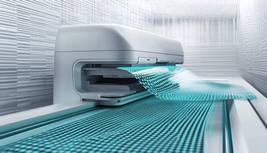Baghouse Brains and Brawn for Industrial Air
When a factory floor coughs, it’s not asking for sympathy—it’s asking for filtration. Dust is the uninvited guest at nearly every industrial party, showing up in clouds, settling in crevices, and generally making a nuisance of itself. Enter the baghouse: the industrial workhorse that quietly handles airborne chaos like a pro.
While household air purifiers get all the glossy attention with their LED lights and whisper-quiet fans, baghouses are out here doing the real heavy lifting. These aren’t sleek countertop devices—they’re massive, unapologetically gritty systems designed to capture and contain industrial dust before it wreaks havoc on equipment, air quality, and OSHA compliance.
Why Baghouses Still Rule the Dust Game
Let’s be honest: most industries wouldn’t last a week without dust control. That’s where traditional baghouse filtration continues to dominate. Despite the rise of new technologies, baghouse systems are as necessary as coffee on a Monday morning.
Baghouse technology is rugged, scalable, and stubbornly effective. The basic idea is simple—force dirty air through fabric filters that trap particulates—but the engineering behind modern baghouse equipment is anything but. Systems are optimized for flow rates, pressure drops, and particulate sizes that would make most people's eyes glaze over.
Some advantages of sticking with baghouse filtration products include:
- High-efficiency particulate capture, even for submicron dust
- Proven performance in punishing environments
- Long service life when maintained properly
- Modular designs that scale with your operation
More Than Just a Giant Dust Vacuum
It’s tempting to think of baghouses as overgrown shop vacs, but that’s like calling a freight train a big skateboard. These systems are intricately designed, often incorporating real-time baghouse monitoring to ensure optimal performance. Monitoring helps track differential pressure, airflow, and bag wear—critical data points when you're running a 24/7 operation.
Maintenance teams no longer rely on guesswork or mystical intuition. Today’s systems give alerts, data logs, and performance metrics, often right on a digital dashboard. It’s not sorcery, it’s just good engineering.
And speaking of engineering—if you're still shopping for upgrades, there’s no better place to start than checking out the latest baghouse equipment. It’s the kind of link that could change your filtration game permanently. No pop-ups, no fluff, just serious gear for serious dust.
Design Choices That Matter
All baghouses are not created equal. A system designed for metal foundries isn’t going to cut it at a flour mill (unless you want airborne bread, which is frowned upon in most OSHA manuals). Choosing the right system depends on:
- Type of dust—abrasive, sticky, explosive, or just plain annoying
- Volume and flow rate of the dust-laden air
- Temperature and humidity conditions
- Required emission standards (and how often you enjoy surprise inspections)
When configured correctly, a baghouse will not just meet the minimum requirements—it’ll exceed them while making your competitors look like they’re filtering air through gym socks.
The Role of Baghouse Monitoring in Keeping Operations Tight
In the world of industrial filtration, "set it and forget it" is a great way to find yourself on a first-name basis with your local EPA inspector. Continuous baghouse monitoring isn’t just helpful—it’s essential. Sensors track key metrics like pressure differential, airflow consistency, and filter bag condition, so operators can act before dust takes over like it's auditioning for a post-apocalyptic film.
Beyond regulatory compliance, proper monitoring extends the lifespan of your baghouse filtration system. It reduces downtime, prevents surprise failures, and generally helps you sleep better at night (assuming your facility runs overnight shifts). Real-time data also means maintenance is based on actual performance, not vibes.
When Traditional Baghouse Solutions Still Win
While the world around us gets lost in buzzwords like AI, blockchain, and quantum vacuum unicorns, traditional baghouse systems stay grounded. They’re not trying to be trendy. They just work—and they work extremely well.
There’s beauty in simplicity. A well-built, well-maintained baghouse doesn’t need gimmicks. It just needs airflow, fabric, and a good pulse-cleaning system to shake loose the dust. No AI-generated flowcharts. No subscription models. Just good, solid engineering doing what it was meant to do.
In high-dust environments—cement, foundries, woodworking, grain processing—a traditional baghouse is often more reliable than experimental systems that promise the moon but deliver a confusing error code and a troubleshooting manual in seven languages.
Choosing the Right Baghouse Filtration Products
The success of a baghouse system hinges on the quality of the baghouse filtration products it uses. Think of it like buying a sports car and then filling it with off-brand lawnmower fuel. If your filter bags can’t handle the type of dust your process generates, you’re wasting time, money, and airflow.
When choosing components:
- Match the media to the material—filter fabric must be compatible with dust characteristics
- Consider temperature and chemical exposure for longevity
- Opt for bags with high filtration efficiency and strong tensile strength
- Don't skimp on the cleaning mechanism—pulse-jet systems often outperform others
Sourcing matters too. You don’t want to discover your filters were stitched together in a warehouse that also sells party balloons and questionable printer ink.
Dusting Off Some Final Thoughts
Industrial dust doesn't negotiate. It doesn’t take weekends off. And it definitely doesn’t care how nice your equipment looks unless that equipment is baghouse technology that’s ready to throw down with particulates like a bouncer at a rowdy bar.
Smart facility managers treat their filtration systems like mission-critical infrastructure—because that’s exactly what they are. Upgrading your baghouse equipment, staying on top of monitoring, and choosing high-quality baghouse filtration products isn’t optional if you care about compliance, uptime, and not breathing powdered regret.
So if your current dust control setup is feeling more vintage than dependable, maybe it’s time to explore your options. You already know where to start: baghouse equipment. It’s more than a phrase. It’s a cleaner future wrapped in steel and stitched in fabric.
|
|

